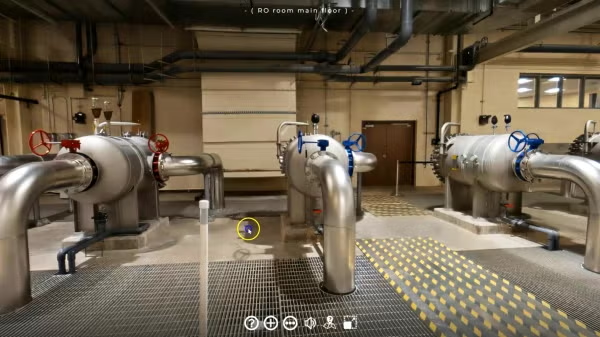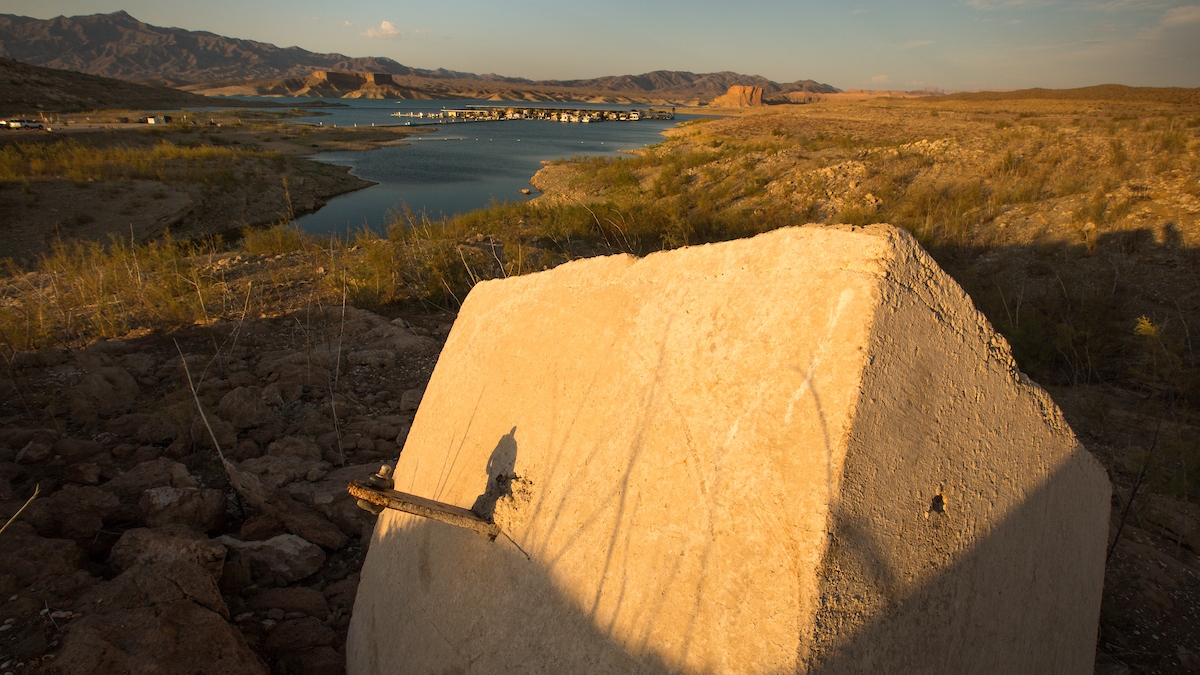The Colorado River is running low.
Battered by 20 years of drought, flows have been consistently dropping in the river that 40 million people depend upon. The water level in Lake Mead is the lowest it has been since Hoover Dam was built, at 36% capacity.
On Aug. 15, the U.S. Bureau of Reclamation will declare a shortage. That will result in a cut in deliveries to Arizona farmers. Most people won’t notice any changes, either in their bills or the new subdivision being built down the block.
But other cuts are looming, and life in the Southwest will become more complicated. Experts say a few wet winters won’t change anything; the river is overallocated between states, and it’s not coming back.
Should we conserve? Or not worry about it? Will we have water cops and drought-shaming, like Nevada and California?
“We have developed very adaptive, complicated systems so that we can have a high degree of water certainty, which we need to have because we're in one of the most arid places in the U.S.,” said Sarah Porter, director of the Kyl Center for Water Policy at Arizona State University’s Morrison Institute for Public Policy, a policy research think tank.
We don't see big impacts to residential users in the immediate future." — Sarah Porter
There won’t be any immediate effects on urban growth. No city has looked to the Colorado River to support growth for some time — that water was allocated a long time ago. Developers are required to show proof of a 100-year supply for any residential project.
“More than half of the growth occurring in the (Central Arizona Project canal) service territory is occurring through enrollment in the groundwater replenishment district,” Porter said. “The projections are for the rate of growth in their groundwater replenishment district to stay the same or increase, not to decrease.”
A developer can enroll a development in the groundwater replenishment district. The development is served by the groundwater and through that enrollment. It’s then the district’s job to go find water to replace what has been mined.
The Central Arizona Groundwater Replenishment District has a 30-year deal with the Gila River Indian Comminuty to lease a water supply. It’s intended to bridge a transition to another water source.
Lots of cities have more than enough water for all their projected growth, especially the older cities that were here when the Salt River Project was established 118 years ago. Some cities have found other supplies of water, either through long-term leases with Native American tribes or through other kinds of supplies that have become available. It doesn't mean these cities don't face challenges, but they're not worried about where to find water supplies.
Newer cities like Buckeye and Queen Creek, however, are actively looking for water supplies.
The challenge for those areas that are growing on groundwater supplies with a promise to replenish in the future is what they are going to do when the groundwater supplies aren't available. Where are they going to get their water supply? How much growth should Arizona or the CAP area accommodate when we know that — at some point — there won't be any groundwater for all that growth?
“One of the things that's very evident if you look at the Arizona intrastate agreement around the Colorado River shortage, it's clear that there has been a big effort to try to protect the highest-priority users, which are cities and tribes, from shortage,” Porter said. “So the supplies for tribes and cities aren't impacted until we get to Tier 3.”
Tier 3 is when Lake Mead drops to 1,025 feet. It will hit Central Arizona Project municipal and industrial water users. A Tier 2 declaration is expected in 2023.
Porter doesn’t see a near future involving things like water cops. One reason for that is who got water a hundred years ago.
There isn’t one bucket of water that all the cities share; there is a priority system. But why should Phoenix and Mesa and Tucson have high priority when Buckeye wants to grow?
When a city knows how much water it has, it can plan and ensure a high degree of water resilience when it has secure long-term supplies. It enables everyone from lowest to highest to understand what their likely future is. And it’s why some cities can build water-use-intensive data centers and microchip fabs and others can’t.
“It means that you have winners and losers, and that's what we sort of have here,” Porter said. “We have places that want to grow, and they're really facing the challenge of how to get the water for growth. Now, did cities who have a lot of water now face that same challenge a long time ago? Yes, they did. They did before the CAP was built and they did before the Roosevelt Dam was built. It's been an ongoing challenge. It's just that some places have been in it longer and are arguably better off when it comes to water.”
Water rates are going to go up in cities where part of the supply comes from the Colorado River via the Central Arizona Project Canal. It’s cheaper to move 2 million acre-feetA unit of volume equal to the volume of a sheet of water one acre in area and one foot in depth; 43,560 cubic feet. of water than it is to move 1 million acre-feet. That’s not going to cause a jump in your bill.
“We don't see big impacts to residential users in the immediate future,” Porter said.
Cities may step up conservation campaigns to stretch their supplies. And cities in the ground water replenishment district can expect their bills to go up “quite significantly,” according to Porter. (They won’t see that cost on their water bill, but on their property tax bill.)
“A lot of water policy has been designed to take us away from the edge of the knife and take us as far away as we reasonably can be,” Porter said. “We're on the edge, but we really are trying to plan out decades and decades in advance.”
Top image: A large concrete block once anchored a dock on Lake Mead, at the Temple Bar Marina, seen here in 2016. The shoreline is now several hundred yards away for the Colorado River-fed reservoir. Photo by Charlie Leight/ASU News
More Environment and sustainability

2 ASU faculty elected as AAAS Fellows
Two outstanding Arizona State University faculty spanning the physical sciences, psychological sciences and science policy have been named Fellows of the American Association for the Advancement of…

Homes for songbirds: Protecting Lucy’s warblers in the urban desert
Each spring, tiny Lucy’s warblers, with their soft gray plumage and rusty crown, return to the Arizona desert, flitting through the mesquite branches in search of safe places to nest.But as urban…

Public education project brings new water recycling process to life
A new virtual reality project developed by an interdisciplinary team at Arizona State University has earned the 2025 WateReuse Award for Excellence in Outreach and Education. The national …


